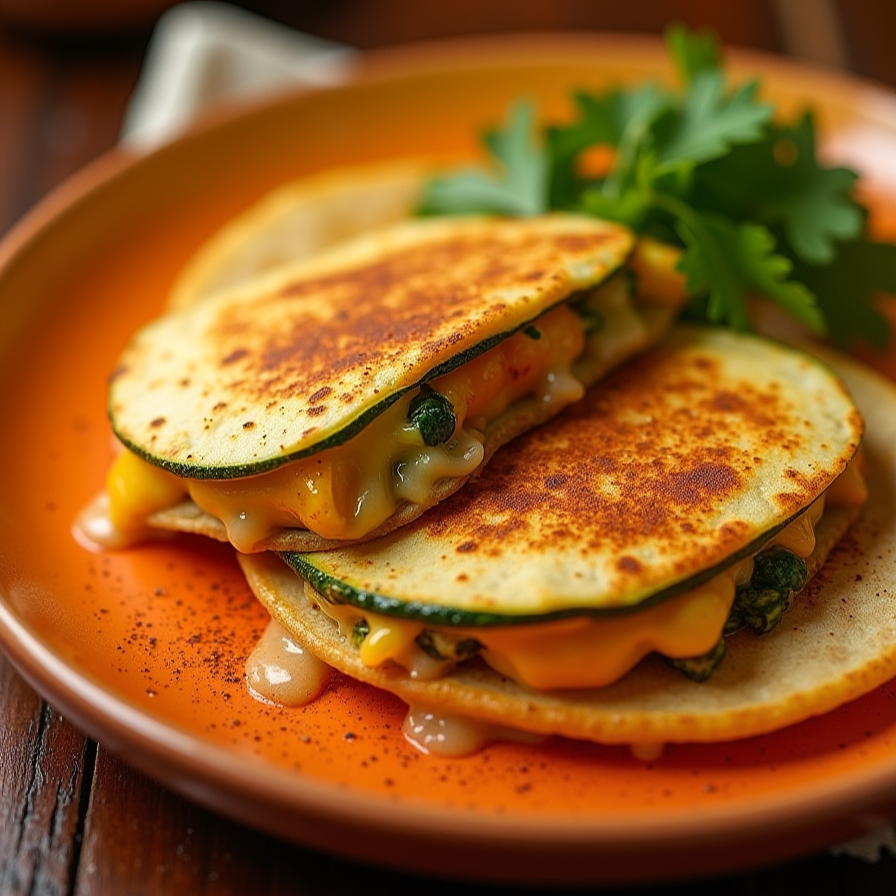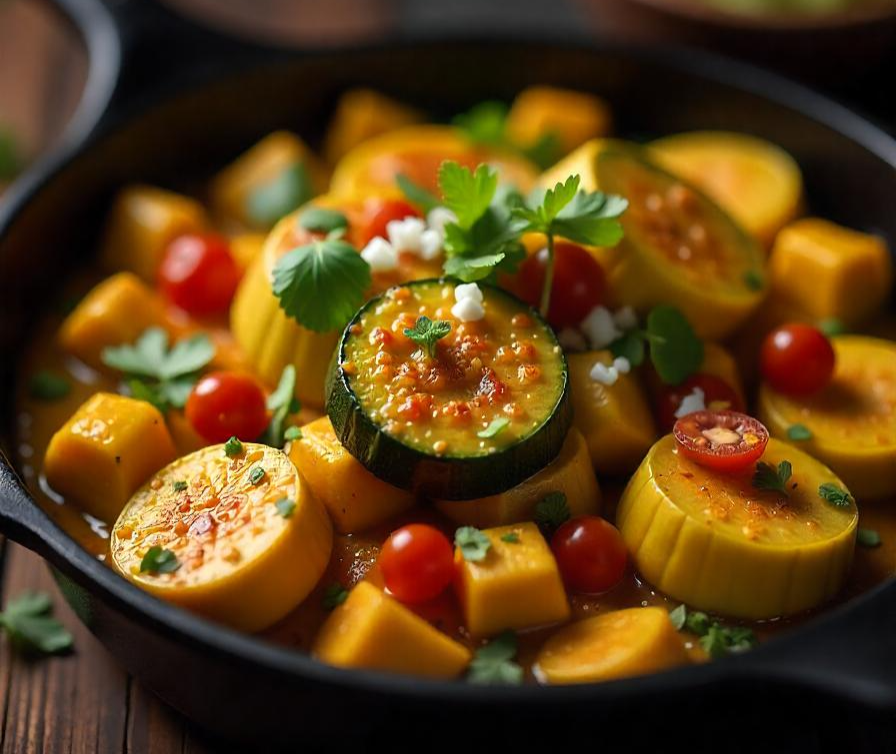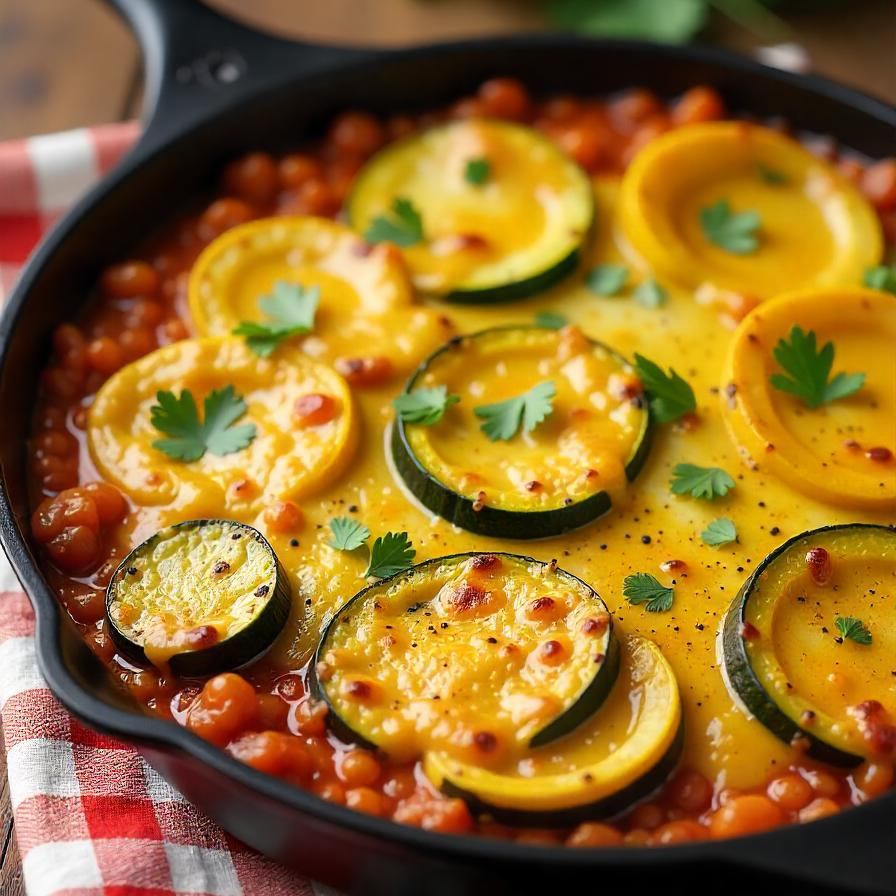Mexican squash simple, flavorful, and full of surprises. If you’ve never tried it, you’re in for a treat! Mexican cuisine is renowned for its ability to blend rich flavors, fresh ingredients, and bold spices into a deliciously unforgettable meal. Among its many culinary delights, Mexican squash recipes stand out as both a staple and a side dish that can transform any meal into something special.
In this ultimate guide, we’ll walk you through everything you need to know about cooking Mexican squash: from understanding the different types, how to prepare it, common cooking challenges, and even how to store leftovers. By the end, you’ll be ready to take on this dish like a pro.
Table of Contents
Why You Should Try Mexican Squash
If you’ve been following the world of cooking, you’ve probably come across Mexican squash, often seen gracing the menus of your favorite Mexican restaurants or featured in the vibrant dishes of traditional Mexican cuisine. But why should you give it a try at home? Let’s take a deeper dive into why it is worth your attention.
Mexican squash, often referred to as “calabacita,” is one of the most versatile vegetables in Mexican kitchens. It can be sautéed, grilled, stuffed, or even incorporated into soups and stews. The natural sweetness of the squash pairs wonderfully with bold spices like chili, cumin, and garlic, giving it that signature Mexican kick. Plus, it’s an incredibly healthy vegetable, full of vitamins and antioxidants.
What is Mexican Squash?
Mexican squash refers to a variety of summer squash varieties, often grouped together under the term “calabacita.” The name is widely used in Mexico to describe both the zucchini-like squash and other similar varieties of squash used in the region’s cuisine.
Different Types of Squash Used in Mexican Cooking
There are many different varieties of squash used in Mexican cooking, but two types stand out when it comes to calabacita: the round Mexican squash and the elongated, zucchini-like variety. Both have a mild, delicate flavor with tender flesh, making them perfect for cooking in a variety of ways.
- Calabacita (Zucchini-like Squash): The most common variety found in Mexican cuisine, calabacita resembles the zucchini but is typically a bit more tender and mild. It’s often sliced, sautéed, or stuffed with flavorful fillings.
- Calabaza (Pumpkin Squash): While slightly heartier than calabacita, calabaza also plays an essential role in Mexican dishes. It has a mild sweetness and a firm texture, making it great for soups, stews, and even tamales.
These squash types are often cooked together in traditional Mexican dishes, adding depth and variety to the final flavor.
Nutritional Benefits of Mexican Squash
Not only is Mexican squash incredibly delicious, but it also comes with a variety of health benefits. Whether you’re looking for a light side dish or a nutritious addition to a main course, calabacita fits the bill. It’s low in calories, rich in dietary fiber, and full of vitamins like Vitamin C, Vitamin A, and folate.
Let’s break it down:
- Low in Calories: A cup of cooked Mexican squash contains roughly 40 calories, making it an excellent option for those watching their calorie intake.
- Rich in Antioxidants: It is packed with antioxidants like Vitamin C, which helps protect the body from harmful free radicals and supports a strong immune system.
- Fiber-Packed: The high fiber content in Mexican squash can help improve digestion and keep you feeling full longer.
- Supports Eye Health: Thanks to its high Vitamin A content, Mexican squash can contribute to maintaining healthy vision.
Learn More About the Health Benefits of Squash: The United States Department of Agriculture (USDA) provides a comprehensive guide on the nutritional value of various types of squash, including Mexican varieties like calabacita and calabaza.
Mexican Squash with Cheese and Herbs
Ingredients
- 4 medium zucchini or Mexican squash (sliced into rounds or half-moons)
- 2 tbsp olive oil
- 1 small onion (chopped)
- 2 garlic cloves (minced)
- 1 tsp cumin
- 1 tsp paprika
- Salt and pepper to taste
- 1 cup Mexican cheese blend (such as Oaxaca or Chihuahua cheese, or shredded mozzarella)
- 2 tbsp fresh cilantro (chopped)
- 1 tbsp fresh parsley (chopped)
- 1 tbsp lime juice (optional)
Add some spice to your meals. You might love our Chicken Taco Seasoning: Flavorful & Easy Recipes to enhance your Mexican squash dish with a zesty twist.
Instructions
- Prepare the Squash:
- Slice the zucchini or Mexican squash into rounds or half-moons.
- Sauté the Vegetables:
- Heat olive oil in a large skillet over medium heat.
- Add the chopped onion and sauté for about 3-4 minutes until soft.
- Add the minced garlic and cook for another 1 minute until fragrant.
- Cook the Squash:
- Add the sliced squash to the skillet. Stir to coat with the onions and garlic.
- Sprinkle in the cumin, paprika, salt, and pepper. Stir everything together and cook for about 5-7 minutes, or until the squash is tender but still holds its shape.
- Add the Cheese:
- Once the squash is cooked, sprinkle the shredded cheese over the top. Cover the skillet and cook for another 2-3 minutes until the cheese is melted and bubbly.
- Finish and Serve:
- Remove from heat and garnish with fresh cilantro, parsley, and a squeeze of lime juice if desired.

Common Problems in Making Mexican Squash and How to Solve Them
Cooking Mexican squash is relatively simple, but like with any dish, a few problems can arise along the way. Fortunately, with the right tips and tricks, these challenges can easily be overcome. Here’s a look at some common issues you might face when preparing Mexican squash and how to solve them.
Overcooked or Mushy Squash? Here’s How to Fix It
One of the most common problems when cooking squash is overcooking it, leading to mushy and unappetizing results. This can happen when the squash is cooked for too long or at too high a heat.
How to Fix It:
- Control the Cooking Time: Whether you’re sautéing, grilling, or baking, always keep an eye on the squash as it cooks. Mexican squash cooks quickly, usually within 5-7 minutes, depending on the method. For grilling or sautéing, aim for tender squash with a slight caramelization, but not so long that it becomes mushy.
- Use Medium Heat: When sautéing, cook on medium heat rather than high heat. This ensures the squash cooks evenly and doesn’t turn mushy.
- Try the “Fork Test”: A quick way to check if your squash is done is by poking it gently with a fork. If it goes in smoothly, it’s perfect. If it’s too soft, it’s likely overcooked.
How to Keep Your Squash from Being Too Bitter
Sometimes, particularly with certain varieties of squash like calabaza, you might notice a bitter flavor. This can be off-putting, especially if you’re not used to the taste.
How to Fix It:
- Remove the Seeds: As mentioned earlier, removing the seeds can help reduce any bitterness, especially in the larger calabaza squash. The seeds are often where the bitterness hides.
- Salt and Drain: If you’re using a zucchini-like squash, sprinkle a bit of salt on the cut pieces and let them sit for about 15 minutes. The salt will draw out excess moisture, which may contain some of the bitterness. Afterward, rinse the squash and pat it dry before cooking.
Overpowering Spices? How to Tone It Down
Mexican squash recipes are known for their bold, flavorful spices, but sometimes those spices can be a little too strong for some tastes. If you find that your dish is a bit too spicy or flavorful, don’t worry—there are ways to balance it out.
How to Fix It:
- Add Dairy: A little sour cream, Mexican crema, or cheese can help tone down the heat. Dairy products naturally neutralize spicy flavors, giving the dish a creamier, smoother taste.
- Incorporate More Squash: If you’ve overdone the spice mix, simply add more squash. The mild flavor of the squash will help balance out the heat and spice, creating a more harmonious dish.
- Sweeten It Up: A touch of honey or a sprinkle of sugar can help tone down excessive bitterness or spiciness, adding a delightful contrast to the dish.
Looking for more healthy veggie dishes? Check out our Broccoli Cauliflower Salad: Recipes, Tips, and Solutions for another nutritious and flavorful addition to your meals!
Pairing Mexican Squash with Other Mexican Dishes
Mexican squash is incredibly versatile and pairs wonderfully with many other traditional Mexican dishes. Whether you’re looking for sides or a way to incorporate squash into your main course, it can complement a wide range of foods.

Best Side Dishes to Complement Mexican Squash
Mexican squash shines as a side dish, but it can also work well with other traditional sides to make your meal even more delicious. Here are some great options:
- Refried Beans: The creamy texture and earthy flavor of refried beans pair perfectly with the mild, tender squash.
- Mexican Rice: A staple in many Mexican meals, Mexican rice’s savory flavors complement the sweetness of the squash. Add a bit of lime for extra zest.
- Corn Tortillas: Warm corn tortillas are the ideal vessel for scooping up sautéed Mexican squash, making them the perfect accompaniment.
These sides not only elevate the dish but also bring out the best in your Mexican squash recipe.
Pairing Mexican Squash with Traditional Salsas
No Mexican meal is complete without salsa, and Mexican squash is no exception. A fresh, tangy salsa can enhance the flavors of your squash and add an extra burst of excitement to each bite.
Best Salsa Pairings:
- Pico de Gallo: This fresh salsa made from tomatoes, onions, cilantro, and lime adds a crisp contrast to the softness of the squash.
- Salsa Verde: The tangy and slightly spicy green salsa works well with the delicate flavor of Mexican squash.
- Roasted Tomato Salsa: For a richer, smoky flavor, try pairing your squash with a roasted tomato salsa.
Looking for quick and tasty main dishes? Check out this Macaroni and Tomatoes: A Delicious and Easy Comfort Food for a simple and satisfying side to your squash.
How to Store Leftover Mexican Squash
Leftovers happen, but don’t worry Mexican squash can be stored and enjoyed later with just a few simple tips. Whether you have a little extra from dinner or want to make a big batch in advance, proper storage will help you maintain its flavor and texture.
Storing for Freshness: Tips and Techniques
To keep your leftover Mexican squash fresh, you’ll want to follow the right steps for refrigeration or freezing. Here are some tips:
- Cool It Down: Allow the squash to cool completely before storing it. If it’s too warm, it could trap moisture inside the container and cause the squash to become soggy.
- Use Airtight Containers: Store your leftover squash in airtight containers to preserve its flavor and prevent it from absorbing other smells from the fridge.
- Refrigeration: Leftover cooked squash will last in the refrigerator for 3-4 days. If it’s cooked with cheese or other dairy products, it’s best to eat it within 2-3 days to avoid spoilage.
- Freezing: You can freeze Mexican squash, but it may lose some of its texture when reheated. To freeze, chop the squash and blanch it briefly in boiling water, then cool it down in ice water before storing it in a freezer-safe container. This can keep for up to 6 months.
Reheating Mexican Squash Without Losing Flavor
The last thing you want when reheating squash is to end up with a soggy or flavorless meal. Here are a few simple ways to reheat your Mexican squash while maintaining its texture and taste:
- Reheat in a Skillet: Heat a little olive oil or butter in a skillet over medium heat. Add the squash and cook for 3-5 minutes until it’s heated through. This method helps retain the slight crispness of the squash while warming it up.
- Microwave with Caution: If you’re in a rush, the microwave can work, but be careful not to overheat it. Place the squash in a microwave-safe dish, cover it with a damp paper towel, and heat in short intervals to prevent it from becoming mushy.
- Bake in the Oven: Preheat your oven to 350°F (175°C), spread the squash on a baking sheet, and bake for 10-15 minutes until heated through and slightly crispy.
Pair your Mexican squash with a comforting soup. Try this Chicken and White Bean Soup: A Hearty Comfort Meal that will perfectly complement the mild flavors of the squash.
Conclusion: Why Mexican Squash Is a Must-Try Recipe
If you’re looking to add something new to your culinary repertoire, Mexican squash is an absolute must-try. Whether you’re preparing a simple sautéed dish or experimenting with cheesy and spicy variations, this versatile vegetable can elevate your meals with ease.
Mexican squash is not only delicious and nutritious but also incredibly flexible, adapting to many different cooking styles and flavors. From quick side dishes to complex meals, it pairs beautifully with other Mexican staples and adds a wonderful texture and flavor balance to any plate.
So next time you’re looking to spice up your meal or simply enjoy a healthy and tasty dish, remember Mexican squash it’s the unsung hero of the kitchen that deserves all the attention!
Frequently Asked Questions
Can I use regular zucchini instead of Mexican squash?
Yes! While Mexican squash (calabacita) and zucchini are slightly different in texture and flavor, they are very similar and can be used interchangeably in most recipes. Zucchini will work well in most Mexican squash dishes, though the flavor might be a little milder. If you’re using zucchini, try adding a bit more seasoning to bring out the flavors.
What’s the best way to cook Mexican squash to keep it crisp?
To keep your Mexican squash crisp, try sautéing it over medium heat with a little olive oil or butter. Avoid overcooking, as it can become mushy. You can also grill the squash for a smoky flavor and a firm texture. The key is to cook it quickly, ensuring it’s tender but still retains its slight crunch.
Can I eat the skin of Mexican squash?
Yes, the skin of Mexican squash is tender and edible. For calabacita, the skin is soft and packed with nutrients, so there’s no need to peel it. If you’re using a larger squash like calabaza, you can peel the skin if you prefer, though it’s entirely up to your preference.
How can I make my Mexican squash recipe spicier?
To add more heat to your Mexican squash, you can increase the amount of chili powder or chipotle powder in the recipe. You can also add fresh chopped chilies like jalapeños or serrano peppers for an extra kick. For a zesty finish, squeeze fresh lime juice over the dish right before serving.
Can I freeze Mexican squash for later use?
Yes, you can freeze Mexican squash! To do so, chop it into slices or cubes, blanch it briefly in boiling water for 1-2 minutes, and then cool it down in ice water. After that, store it in an airtight, freezer-safe container. Keep in mind that frozen squash may lose some of its texture, so it’s best used in cooked dishes like soups or stews.
What are the health benefits of Mexican squash?
Mexican squash is low in calories and rich in vitamins and minerals like Vitamin A, Vitamin C, and folate. It’s also high in fiber, which aids in digestion and helps keep you feeling full. The antioxidants in Mexican squash support a healthy immune system, and it’s a great addition to any balanced diet.
Can I make a vegetarian Mexican squash dish?
Absolutely! Mexican squash is already a vegetarian-friendly ingredient, and you can easily make a plant-based dish by skipping the cheese or meat and focusing on the squash itself. You can also add beans, rice, or roasted vegetables to make a filling, delicious vegetarian meal.
What should I serve with Mexican squash?
Mexican squash pairs wonderfully with many Mexican dishes. You can serve it as a side with tacos, grilled meats, or enchiladas. It also goes great with Mexican rice, refried beans, or a fresh salad. To enhance the flavor, pair it with a tangy salsa or a dollop of sour cream.


2 thoughts on “Mexican Squash Recipe”